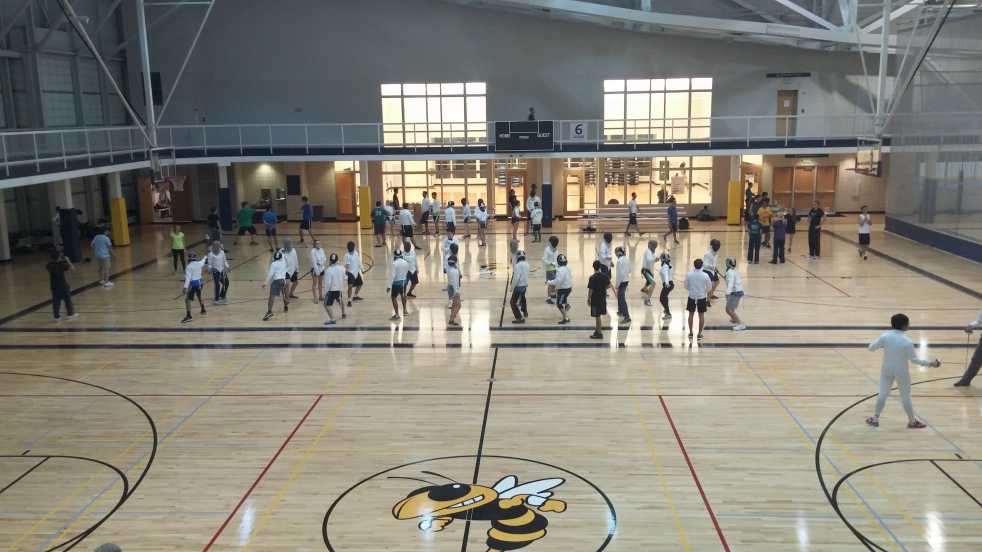The popular perception of the sport of fencing involves competitors sparring with blades and wearing a mesh-like metal clothing over white protective gear. Although that image is partially correct, there is much more to fencing than simple sword fights. That much is evident from speaking with Stephanie Baione, the public relations chair for the Yellow Jacket Fencing Club.
The Yellow Jacket Fencing Club primarily recruits through publicity on social media, flyers and during the club recruiting time at FASET. Many of the club members come to college with no fencing experience, as did Baione, who says that she “heard about it through FASET and wanted to try something different.” While acknowledging that the sport may not be for everyone, Baione hopes to introduce it to those who find it interesting. While different from a typical club sport, fencing attracts a diverse group of students across Tech.
Baione emphasized that fencing is not just one sport, but instead three, each based off a different weapon. Beginners start off with a foil, but after much practice, have the opportunity to select the épée or sabre. Depending on the weapon, the target area changes, as does the protective attire, but the goal remains the same no matter the weapon: score a touch against the opponent. Points are given out with the assistance of electronic equipment that indicates a hit through a light and audible beep, observed by a referee who starts and stops the competition, tests weapons and distributes penalties if needed. The sport depends heavily on balance, timing, footwork and blade work — a good fencer exhibits all of these qualities in competition.
The Jackets compete within the Southern Intercollegiate Fencing Association (SIFA), which includes schools like the University of Florida, Clemson, the University of Tennessee and other Georgia schools, such as the University of Georgia, Mercer and Emory. Baione identified Tennessee as Tech’s most frequent opponent and most akin to a rival, but the term “rival” is hardly appropriate, as fencing is more of an individual sport when it comes to tournaments. The first round of the tournament is comprised of round robin pool play, which determines placement in the second round, an elimination-style bracket.
The club just wrapped up the fall SIFA tournament, which Baione described as the “yearly tournament for new fencers.” Future tournaments of note include the Tiger Open held by the Clemson fencing team, as well as the in-house tournament held at the CRC by Tech’s very own club. In the spring semester, the team hosts the Yellow Jacket Open, which is the largest fencing tournament in Georgia. The tournament is student-run, and Baione considers it one of the bigger events that the fencing club runs, a testament to the group’s ability.
The club is also registered with the United States Fencing Association, which oversees many large fencing tournaments in the country and provides sponsorship for the majority of the tournaments that Yellow Jacket
Fencing attends.
Fencing is not the first sport that comes to mind when fans discuss collegiate athletics. Yet, as an avenue for students to display their physical and mental abilities in a high-pressure environment, there is no doubt that fencing serves an important role on campus. Students from diverse backgrounds get the chance to compete against talented athletes from other schools across the country. It is a chance to fuel a competitive fire, to meet friends with similar passions and to determine prowess. In other words, it is exactly what many students miss when they leave high school athletics behind and arrive at college, a void that must be filled.
Anyone is allowed to join the club, even those with no prior fencing experience. There is no minimum attendance required to be a member, though attendance is taken into account when it comes to limited travel space and running for club officer positions.
Baione gives the club a glowing recommendation: “Join fencing, it’s pretty amazing,”
Their results, camaraderie and bright future would seem to suggest just that.
